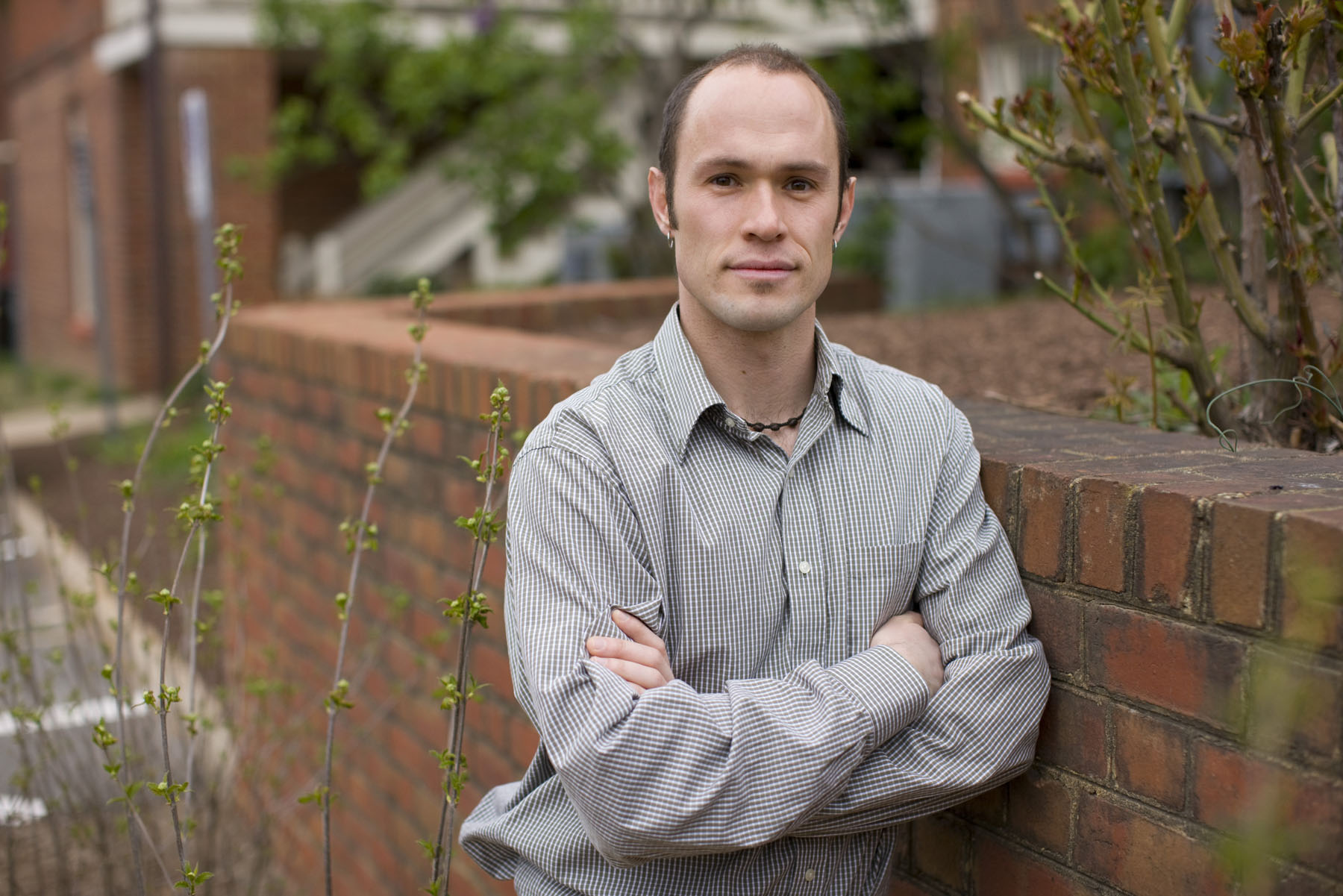April 10, 2009 — Clowning led Tim Cunningham to nursing. Now he's serious about providing clean water to rural Africa.
A graduate of the College of William and Mary with a degree in English, Cunningham worked for more than 10 years as a clown. During that time, he volunteered with Clowns Without Borders in various African communities, where he saw extreme poverty and poor health conditions.
"Performing with Clowns Without Borders at refugee camps and clinics around the world, I saw people suffering from poverty, disease and warfare and thought I would like to get more involved with health care," Cunningham said.
Armed with this awareness, Cunningham entered the two-year University of Virginia School of Nursing clinical nurse leader master's degree program.
While completing the program – which trains nurses to provide leadership at the point of care – he was offered an opportunity last summer to work with U.Va.'s Center for Global Health interdisciplinary project, Water and Health in Limpopo Province, South Africa.
The project, which brings together universities and communities, aims to become a replicable model for design and implementation of water and sanitation projects. U.Va. partners with the University of Venda on various initiatives in the area.
Cunningham's goal was to learn how community members in a small, remote Limpopo village viewed their water system, and about the community's perceptions relating to clean water and health. A broader goal was to build relationships with the community.
He designed a research project using "photovoice" methodology, developed in the mid-1990s, which combines photography with grassroots social action. It's research that is designed to empower people.
Typically, the photography portion incorporates a theme – in this case, water and community perceptions surrounding its source and need. Cunningham gave cameras to 13 village residents, ages 26 to 77, and asked them to capture images that involved their water supply. Most had never used a camera before.
After taking more than 300 photos, the participants talked with Cunningham about the significance of these images for the community.
"A picture can speak a thousand words, and the methodology gives voice to groups who don't often have a voice politically and socially," he said. "It's a way to put research tools in the hands of community members."
The water source for the village begins at a waterfall in the mountains and flows down a stream that ends near the village. Over the years, residents put together crude above-ground pipes that bring water from the stream closer to the village for drinking and irrigation.
Cunningham described the physically hard life of the villagers, many of whom live in traditional mud huts with straw roofs called roundavels and exist on subsistence farming. Life is physically hard, and diseases of poverty and incidence of HIV are high.
"There is a lot of pain associated with water," he said. "Women carry large plastic containers of water on their heads in addition to a child under one arm and a pile of laundry under the other. It's just painful. You do that every day. You need your water."
The research results weren't what Cunningham expected. "The biggest surprise was that I assumed people would be interested in having clean water so that they could be healthy," he said.
With the photographs as a jumping-off point, his discussions with the participants mostly focused on convenience and the need for better infrastructure. "Very few people mentioned health as one of the main reasons they wanted clean water," Cunningham said. Their ideas centered on economic issues such as growing more crops and selling them.
Empowered by their photographs, some participants shared them at community meetings, hoping to rally support and action for water projects.
Cunningham's project had other unexpected results.
One of the participants asked Cunningham to provide a certificate of participation to present to her pastor, as the only time she had to take photos was during the time she was supposed to be in church.
Cunningham presented each participant with a certificate. When he returned to the village in December, he learned that all had parlayed their certificates into jobs with a construction company that came to the village to recruit workers.
"The certificates served as a job reference," Cunningham said. "As researchers we get a lot of benefits, but the communities don't always reap the benefits. It was nice to hear that the project itself led to a little more sustainability."
The relationship-building that qualitative research like this provides lays the groundwork for later quantitative research, in which hard numbers lead to clearer associations between hypothesis and results, Cunningham said.
"I would hope that this project continues developing those trusts so that when researchers come back to do more quantitative research, people will say I like what you did. I'm going to be more honest now when you ask me how often does my child have diarrhea."
Cunningham's work is garnering attention. He presented his findings at the Global Health Education Consortium Conference at the University of Washington last week and will take it to a "Unite for Sight" Conference at Yale in late April. The results will also be published in conjunction with an engineering conference in Beijing in June.
Cunningham, who expects to graduate in August, currently is working closer to home on his capstone project, which focuses on whether post-traumatic stress in emergency workers can be reduced by meditation techniques.
Although he is not sure of the path he will follow after graduation – research, clinical work or continuing his education – he hopes to be able to return to Africa at some point.
In the meantime, he's still bringing smiles to faces around the world with his work with Clowns Without Borders, serving as vice president of the board, where he advises and helps strategize their activities around the world.
— By Jane Ford
Media Contact
Article Information
April 17, 2009
/content/pictures-give-voice-african-community-through-graduate-nursing-students-research

